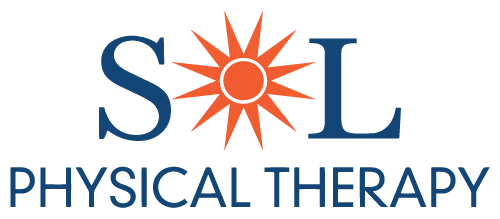Occupational Therapy
Occupational Therapy at Sol Physical Therapy
Expert Hand Therapy for Optimal Function and Independence
At Sol Physical Therapy, our occupational therapy services focus on restoring function and independence, particularly through specialized hand therapy. Our certified hand therapists are dedicated to helping you recover from injuries, surgeries, and manage chronic conditions affecting your hands, wrists, and forearms.
What is Occupational Therapy? How is it Different from Physical Therapy?
Occupational therapy (OT) and physical therapy (PT) are both types of rehabilitation therapy, but they differ in their focus, goals, and methods. While OT and PT have distinct focuses, they often overlap in practice, especially in areas such as hand therapy, where both disciplines may collaborate to provide comprehensive rehabilitation for upper extremity injuries or conditions.
1. Focus
- Occupational Therapy (OT): OT focuses on helping individuals develop or regain the skills needed for daily living and functional tasks. This includes activities such as dressing, grooming, cooking, and work-related tasks. Occupational therapists often work on improving fine motor skills, cognitive abilities, and sensory processing.
- Physical Therapy (PT): PT primarily focuses on improving physical function and mobility. PT aims to enhance strength, flexibility, balance, and coordination, often through exercises, manual therapy, and specialized techniques. Physical therapists address issues related to movement and biomechanics, such as walking, standing, and posture.
2. Goals:
- Occupational Therapy (OT): The goal of OT is to enable individuals to participate in meaningful activities and occupations, despite physical, cognitive, or emotional limitations. This may involve adapting the environment, modifying tasks, or teaching alternative strategies to accomplish daily activities.
- Physical Therapy (PT): PT aims to restore or improve physical function, reduce pain, and prevent disability. Physical therapists work to enhance mobility, strength, and endurance to help individuals perform activities such as walking, climbing stairs, and lifting objects.
3. Methods:
- Occupational Therapy (OT): OT interventions may include therapeutic activities, exercises, adaptive equipment training, sensory integration techniques, cognitive training, and environmental modifications.
- Physical Therapy (PT): PT interventions commonly involve therapeutic exercises, manual therapy (such as massage or joint mobilization), modalities (like heat or ultrasound), functional training, and education on injury prevention and proper body mechanics.
Conditions We Treat
- Carpal Tunnel Syndrome: Relief from pain and numbness caused by compressed nerves.
- Tendon and Ligament Injuries: Rehabilitation for tears, sprains, and overuse injuries.
- Fractures and Dislocations: Support for healing and restoring function after bone injuries.
- Arthritis: Management of pain and stiffness in the hands and wrists.
- Post-Surgical Rehabilitation: Accelerated recovery and improved function following hand and wrist surgeries.
- Nerve Injuries: Restore function and sensation in hands and fingers.
Our Approach
- Comprehensive Evaluation: A detailed assessment to understand your condition, functional limitations, and goals.
- Personalized Treatment Plan: Tailored therapy plans that include exercises, manual therapy, and adaptive techniques.
- Therapeutic Exercises: Customized exercises to strengthen muscles, improve range of motion, and enhance dexterity.
- Manual Therapy: Hands-on techniques to reduce pain, increase mobility, and promote healing.
- Splinting and Bracing: Custom-fitted splints and braces to support healing and protect injured areas.
- Adaptive Techniques: Training in techniques and the use of adaptive equipment to improve independence in daily activities.
- Patient Education: Empowering you with knowledge and strategies to manage your condition and prevent future injuries.
Why Choose Sol Physical Therapy?
- Certified Hand Therapists: Our team has specialized training and certification in hand therapy.
- Individualized Care: We develop treatment plans tailored to your unique needs and goals.
- Comprehensive Services: We offer a wide range of therapies to address various hand conditions and injuries.
- Advanced Techniques: Benefit from the latest therapeutic methods and state-of-the-art equipment.
Take Control of Your Recovery
If you’re facing challenges with hand, wrist, or forearm function, Sol Physical Therapy is here to help. Contact us today to schedule your initial assessment and start your journey toward improved function and independence with our expert occupational therapy services.
Meet Our Specialists

Rachel Locke, OTR/L, CHT
Rachel graduated with a master’s degree in occupational therapy from Barry University, after receiving a bachelor’s degree from Florida State University. Rachel is a certified hand therapist (CHT), holding advanced knowledge and extensive training in shoulder, elbow, wrist and hand-specific rehabilitation. Rachel is proficient in splinting the upper quarter to facilitate healing post-surgery as well as to reduce pain and improve function in the non-surgical upper limb.
Rachel believes the upper extremities provide a level of independence that is directly related to quality of life. Rachel enjoys helping her patients restore function and reduce pain so they can participate in activities that are meaningful.
Outside of practicing occupational therapy, Rachel enjoys spending time with her husband, daughter and two dogs.
What Our Patients Say...











I was very happy with my experience here. The staff was friendly and helpful. My therapist was excellent. All over a wonderful place to get therapy! Highly recommend!
- Holly W. (via Google Reviews)
I see 3 of the physical therapist there and feel like part of the family. I am treated with respect and my pains are very serious to them as they always put me first. Thank you SOL Physical Therapy!
- Dawn R. (via Google Reviews)
I have been to many different physical therapy places but of all the ones I have been to, I must say, SOL Physical Therapy is the best. All the therapists, techs and front office personnel are unbelievably friendly, knowledgeable and always willing to assist you and your questions. They never try and rush you through your therapy (and I have been places where that was definitely the case). I would recommend SOL to anyone that needs physical therapy, they are top notch!!
- Debbie A. (via Google Reviews)
Sol Physical Therapy is such an incredible place to go for physical therapy. I have been going for over a year and have never once had a problem. Everyone from the front desk staff, to the techs, to the physical therapists are extremely helpful, care about the patients, and will do whatever is needed to support you as the patient.
- Aimee K. (via Google Reviews)
We brought our 4 month old in to see AJ for torticollis. I am beyond happy we found this place as AJ was AMAZING with our son. He was personable and explanatory with everything and our son smiled so much during our visit while he was checking out his range of motion and doing stretches. We have upcoming appointments and though he is booked out a good month in advance it is WORTH the wait ten fold ⭐️⭐️⭐️⭐️⭐️
- Tali B. (via Google Reviews)
I have had the pleasure of seeing Stephanie L, Dan, Rachel, and Joe at the Fort Lowell location. They are all extremely knowledgeable and know how to make the experience fun, even when you are in pain. I would (and have) highly recommend them to anyone who needs PT or OT. Kailey at the front desk is always very kind and willing to help as well.
- Sarah G. (via Google Reviews)
The staff is amazing. Very knowledgeable therapists. The front office staff is very friendly. I can’t say enough about the practice but thank you to everyone.
- Paulla N. (via Google Reviews)
We took our daughter here to get evaluated for her torticollis. The staff was very friendly and helped us get set up with a few appointments at once. Our physical therapist AJ was very informative and was gentle with our baby. Definitely looking forward to coming back for future appointments.
- Nick T. (via Google Reviews)
I would not choose another place! Very professional and goes beyond to get you in at your convenience!
- D. A. (via Google Reviews)
The BEST! Philip is my Vestibular/Physical therapist. I have been diagnosed with bilateral, Superior Canal Dehiscence. Migraines, balance problems, hearing loss, the whole 9 yards. After a procedure to correct one side (done at UCLA), I had to find a "VRT". My husband and I absolutely love the results and improvements in my daily life. Thank you Philip, Patrick, Jessie, Jessa, A.J, Matt and Sharon, for the help you all provide to your patients!!
- D. Val (via Google Reviews)
We picked this physical therapy business randomly as it was close to home and they take my insurance. As it turned out, we were very pleased. The staff was very efficient and friendly. The thing that pleased me most was that they asked how things went since the last session. Then based on what I said, they tailored the day's exercises.
- Barbara S. (via Google Reviews)

